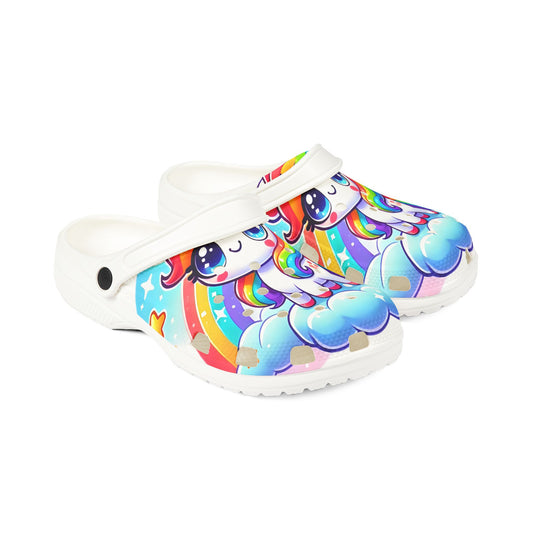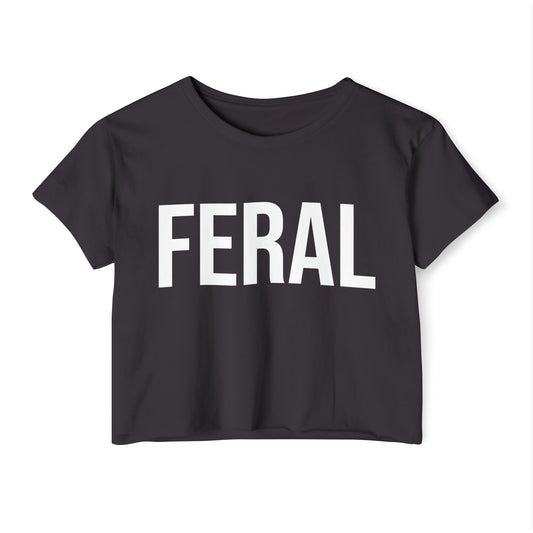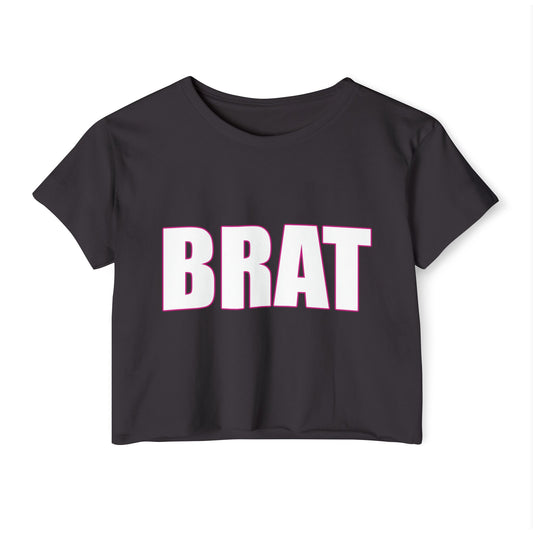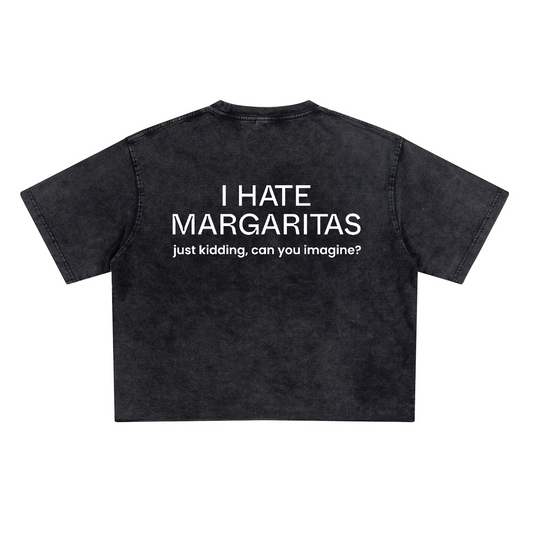
Seafood Boil Near Me: Where to Satisfy Your Cravings Today
www.thebayouweho.comShare
Introduction: Discovering the Best Seafood Boil Near You
Seafood boils have evolved into a celebrated culinary tradition, blending bold flavors, fresh ingredients, and regional influences into a dining experience that is both communal and satisfying. From the Lowcountry boils of the Carolinas to the Cajun crawfish feasts of Louisiana, this dish has found its way onto tables across the nation, delighting seafood enthusiasts with its unique blend of spices and textures.
Key to locating the best seafood boil is understanding the qualities that set the exceptional options apart. Freshness ranks at the top of this list, with vibrant seafood such as shrimp, crab, lobster, and crawfish as the main focal point. Restaurants specializing in seafood boils often source their shellfish locally or arrange for quick shipments to preserve the integrity of their dishes. Complementing these proteins, the vegetables, corn on the cob, red potatoes, and even sausages are seasoned generously with a flavorful spice blend.
Regional variations also play a significant role, offering distinct styles suited to different palates. Restaurants in the Gulf Coast region of the United States tend to emphasize robust Cajun or Creole seasonings, whereas locations farther north may focus on Old Bay seasoning, delivering a milder yet equally satisfying flavor profile.
Modern seafood boils also provide customizable options. Diners can select varying levels of spiciness, preferred sauces, or additional components such as mussels or clams. Many establishments accommodate larger groups with jumbo platter servings, perfect for family gatherings or social outings.
Seeking out local reviews, social media recommendations, and online maps ensures finding a nearby eatery that blends top-quality ingredients and exceptional service.
The Popularity of Seafood Boils: A Culinary Phenomenon
Seafood boils have emerged as a celebrated dining experience across the United States, blending bold flavors, communal traditions, and cultural influences. This culinary phenomenon attracts food enthusiasts not only for its layered tastes but also for the element of shared enjoyment that distinguishes it from other meal types. Rooted in Southern coastal traditions, seafood boils highlight a rich culinary heritage that has been embraced and reinterpreted nationwide.
A traditional seafood boil typically involves boiling a mix of shellfish, such as shrimp, crab, or crawfish, alongside accompaniments like corn on the cob, sausages, and potatoes. These ingredients simmer in a spiced broth infused with garlic, paprika, cayenne, and other seasonings, creating a meal that is equal parts robust and satisfying. Variations of the seafood boil exist across regions, allowing chefs to tailor recipes while maintaining the core essence of the dish.
The growth in popularity can also be attributed to the advent of casual dining atmospheres. Seafood boil restaurants often serve the dish directly on communal tables, encouraging diners to engage with the food using their hands. This hands-on, interactive experience fosters a sense of community, appealing to families, friends, and strangers alike. The simplicity of preparation and rustic presentation contrasts with the complexity of flavors, enhancing its appeal to food lovers seeking authenticity.
In addition to the dining experience, globalization and social media have amplified the trend. Vibrant visuals of seafood boils, often piled high and drenched in flavorful sauces, captivate audiences and spark interest. Many establishments now offer personalized seasoning levels, heat preferences, and even seafood choices, catering to a broader audience and solidifying the dish’s place as a versatile and cherished option.
Seafood boils represent more than just a meal—they evoke celebration and togetherness while marrying flavors that continually satisfy evolving palates. This cultural and gastronomic fusion ensures their enduring popularity.
What Makes a Great Seafood Boil Experience?
A great seafood boil experience combines the freshest ingredients, a rich flavor profile, and a vibrant dining ambiance. It is more than just a meal; it is a communal event that merges culinary quality with cultural tradition.
1. High-Quality, Fresh Ingredients
The heart of any seafood boil lies in the quality of its components. Freshly caught shrimp, crab, crawfish, lobster, or other shellfish serve as the star attractions. Seasonal vegetables like corn, potatoes, and sometimes andouille sausage add delicious textures and flavors. Seafood boils emphasize freshness, with the seafood retaining its natural sweetness.
2. Perfectly Spiced and Seasoned Broth
The seasoning makes or breaks a seafood boil. A skillfully crafted blend of spices, such as Old Bay seasoning, garlic, paprika, and cayenne, imparts a bold and tangy flavor to the dish. Many regions add their signature touches, such as Cajun or Creole influences. Achieving the right seasoning balance ensures the seafood absorbs the vibrant flavors throughout the cooking process.
3. Authentic Cooking Methodology
Traditional seafood boils involve boiling the ingredients in a large pot, layering them strategically to ensure even cooking. Simmering the seafood and vegetables results in a tender, juicy texture. The process itself, often done outdoors or in a shared setting, adds to the authenticity.
4. Interactive Dining Experience
The communal setup of seafood boils enhances the atmosphere. Often served over newspaper or butcher paper and eaten with hands, the feast encourages interaction and shared enjoyment. Such informality fosters connection and engages diners in the experience.
5. Satisfying Side Dishes and Dipping Sauces
A memorable seafood boil includes complementing side dishes, such as crusty bread, coleslaw, or cornbread. Dipping sauces like garlic butter, spicy Cajun, or tangy lemon aioli elevate the flavors of the seafood. These accompaniments round out the meal while allowing diners to customize each bite.
Exceptional seafood boils blend these elements seamlessly, creating an immersive and rewarding experience.
Types of Seafood in a Boil: A Guide to Menu Options
Seafood boils offer a diverse selection of ocean-fresh delicacies tailored to suit a wide range of seafood enthusiasts. The dishes are typically prepared with bold seasonings and designed for communal enjoyment. Below is an overview of the most common options included in seafood boils, providing insight into what diners might encounter on the menu.
Shellfish Varieties
Shellfish often serve as the cornerstone of a well-rounded seafood boil. Options typically include:
- Shrimp: A staple ingredient, shrimp are prized for their delicate sweetness and firm texture. They are usually served in the shell to lock in flavor.
- Crab: Both snow crab legs and king crab legs often appear, offering tender, flavorful meat that’s worth the effort of cracking.
- Lobster: This luxurious option can elevate a seafood boil with its buttery and rich taste, typically served as whole lobster or lobster tails.
- Crawfish: Popular in Southern boils, especially Louisiana-style, crawfish are smaller but packed with bold flavor.
- Clams and Mussels: These bivalves add a briny dimension to the mix and are usually included for their tender chewiness and contrasting flavor.
Fish and Other Seafood
Certain boils may also incorporate fish or other seafood to expand the flavor profile further:
- Whitefish Fillets: Varieties like cod or haddock are sometimes added for a flaky, mild-tasting component.
- Scallops: Their buttery texture and inherent sweetness make scallops a premium addition to many boils.
Non-Seafood Additions
Complementary items often round out the spread, creating a complete dining experience:
- Corn on the Cob: Adds a touch of natural sweetness and vibrant color to the pot.
- Potatoes: Starchy and hearty, potatoes are typically boiled to absorb flavors from the seasoning.
- Andouille Sausage: Provides a smoky, spicy kick that pairs well with seafood.
Seasonings, spice levels, and menu configurations vary based on regional styles, ensuring that each boil offers a unique tasting adventure.
Finding Authentic Cajun and Creole Flavors
For those seeking to savor the distinctive taste of Southern cuisine, finding an authentic Cajun or Creole seafood boil is key. Recognized for their bold spices, rich textures, and fresh ingredients, these regional culinary traditions bring a unique flair to a seafood boil experience.
Cajun-style boils often feature a rustic, robust flavor profile. The seasoning mix typically includes elements such as cayenne pepper, paprika, garlic powder, onion powder, and thyme. The seafood—commonly shrimp, crawfish, crab, and mussels—is boiled along with red potatoes, corn on the cob, and andouille sausage. Everything is cooked in a flavorful broth infused with these spices, creating a hearty and satisfying meal. Cajun boils are renowned for their fiery heat and unpretentious presentation, often served directly on butcher paper or in a communal heap for diners to dive in.
On the other hand, Creole seafood boils tend to emphasize a more refined and layered flavor. While sharing some foundational spices with Cajun boils, Creole dishes might incorporate tomatoes, bell peppers, and a touch of sweetness such as brown sugar or molasses. The inclusion of aromatic ingredients like celery, onions, and parsley enhances the complexity of the dish. Creole boils excel in balancing heat with subtler notes, appealing to those who favor a slightly milder yet equally delicious option.
When searching for such authentic flavors, diners should explore restaurants or food trucks rooted in Louisiana traditions. Local establishments often include family recipes handed down over generations, ensuring a genuine culinary experience. It’s also worth checking reviews, as customer feedback frequently highlights how true to form a given eatery’s offerings are. Many establishments pair these seafood boils with bread or rice to fully complement the rich and spicy flavors.
전 Usuing
Tips for Locating the Best Seafood Boil Spots Nearby
Leverage Online Food Platforms Utilize food review websites and apps such as Yelp, Google Reviews, or Zomato to narrow down options for local seafood boils. These platforms frequently feature detailed reviews, ratings, and photographs from other diners to gauge the quality of the food and service. Sorting results based on proximity or star ratings can help refine the search further.
Check for Authenticity of Ingredients Seafood boils are often celebrated for their use of fresh, high-quality seafood. Look for venues emphasizing locally sourced or fresh catch ingredients. Signs of authenticity may include mentions of wild-caught options, use of artisanal spices, or regional styles (e.g., Cajun, Low Country, or spicy Asian fusion).
Examine Menus for Variety Look for menus that boast a wide range of seafood options such as crab legs, shrimp, lobster, mussels, or clams. Spots offering unique sauces and seasoning blends provide customizable flavor profiles that elevate the experience. Options for add-ons like sausage, corn, and potatoes are another hallmark of a good boil.
Join Local Foodie Communities Neighborhood Facebook groups, food bloggers, or Reddit communities often share honest opinions on hidden gems and trending spots. Recommendations from locals provide a curated list of places worth visiting, and you may discover specialty dishes unavailable in chain restaurants.
Observe Cleanliness and Atmosphere Hygiene standards and ambiance play significant roles in seafood dining. Aim for establishments that balance a welcoming atmosphere with evidence of cleanliness, as seafood boils are often served directly on tables for an interactive dining experience.
Take Note of Promotions Many seafood boil spots offer weekday specials or all-you-can-eat nights. Checking out such deals can make the experience not only delicious but also budget-friendly. Websites and social media handles of restaurants are excellent resources for spotting discounts.
Evaluate Customer Service A warm, knowledgeable, and attentive staff enhances any dining experience. Seek out restaurants where servers can clearly explain sauce options, spice levels, and their most popular boil combinations.
By focusing on these criteria, locating the best seafood boil spots becomes significantly more convenient, ensuring a satisfying and memorable meal.
Regional Variations of Seafood Boils Across the U.S.
Seafood boils, while unified by their vibrant mix of seafood, spices, and communal dining style, differ significantly across regions in the United States, shaped by local traditions, available ingredients, and cultural preferences. Each variation showcases the rich culinary diversity of the nation.
One of the most famous styles is the Louisiana Cajun seafood boil, deeply rooted in Southern traditions. This boil features crawfish, shrimp, and crab, often paired with potatoes, corn, and andouille sausage for a hearty mix. The seasoning blends are bold and spicy, commonly including cayenne, paprika, garlic, and thyme, alongside liberal doses of hot sauce.
In contrast, the Lowcountry boil, originating from South Carolina and Georgia, takes a slightly milder approach. This version focuses heavily on shrimp, complemented by sausage, corn, and red potatoes. Old Bay seasoning—a staple in Eastern cuisine—is prominently featured, delivering a flavor profile that balances salt and spice.
The New England clambake is another iconic variation, reflecting the region’s coastal bounty. It often includes clams, lobster, mussels, and white fish, combined with corn and potatoes. What sets this style apart is the cooking method; it’s traditionally prepared by steaming the seafood over hot stones and seaweed, infusing the dish with a distinctively briny flavor.
The Pacific Northwest seafood boil uses Dungeness crab as its centerpiece, reflecting the abundance of this local specialty. In addition to crab, shellfish like oysters and clams are prominent, seasoned sparingly to allow the natural sweetness of Pacific seafood to shine.
Seafood boils in Texas often integrate Mexican-inspired flavors, combining shrimp and crab with chili powder, cumin, and lime for a zesty twist. Regions like Maryland, widely known for their crab feasts, focus intensely on blue crab, relying on butter-based sauces and generous doses of Old Bay seasoning as a hallmark.
Regional seafood boils continue to evolve, influenced by immigrant communities and contemporary dining trends. These local variations provide insights into the culinary history and cultural identity of each area, making every seafood boil an experience unique to its place of origin.
Must-Try Side Dishes and Sauces for Your Seafood Boil
A seafood boil experience is enhanced by the perfect combination of sides and sauces that complement the richness of seafood and the bold spices used in the boil. The following selections are staples and creative additions ideal for turning your seafood feast into a memorable culinary adventure.
Popular Side Dishes
- Corn on the Cob: Sweet, juicy corn pairs beautifully with the savory spices of a seafood boil. It absorbs the broth’s flavors while maintaining its delicate sweetness and texture.
- Potatoes: Whether red potatoes or Yukon Golds, their tender texture soaks in the boil’s spices, providing hearty and satisfying bites.
- Coleslaw: The crispness and tanginess of coleslaw offer a refreshing balance to the spiciness and richness of the seafood.
- Garlic Bread: Toasted and buttery garlic bread is perfect for scooping up remaining sauces and broth, adding a comforting, indulgent touch.
- Hush Puppies: These fried balls of cornmeal dough add a crunchy contrast to the soft textures of the seafood, with hints of sweetness.
Essential Sauces for Seafood Boils
- Garlic Butter Sauce: A blend of melted butter, fresh garlic, and seasonings enhances the taste of shellfish, offering a rich yet simple addition.
- Cocktail Sauce: This classic combination of ketchup and horseradish adds a tangy, slightly spicy edge, perfect for shrimp and crab.
- Spicy Cajun Sauce: A bold mix of cayenne, paprika, and other Cajun spices adds heat and depth, complementing the boil’s flavors.
- Lemon Herb Aioli: Creamy and citrusy, this sauce brings a light and refined taste to seafood and vegetables alike.
- Smoky Remoulade Sauce: Often mustard-based with smoky paprika and other seasonings, it pairs fabulously with fried sides like hush puppies.
Pairing Tip:
The harmony between side dishes and sauces is essential. Opt for sauces that complement—not overpower—your seafood boil’s signature taste while adding variety to each bite. Choices like garlic butter or Cajun sauce adapt seamlessly across a broad selection of side dishes.
To elevate your meal further, consider experimenting with seasonal vegetables or crisp salads to diversify textures, keeping the seafood as the centerpiece of this indulgent feast.
How to Spot Freshness and Quality in Seafood Restaurants
Selecting a seafood restaurant that guarantees freshness and quality is essential to ensuring a satisfying dining experience. Several indicators can help diners assess the overall standards of a restaurant before placing an order.
Observing the Menu
Freshness begins with the menu. A seafood restaurant committed to quality often highlights the origin of its seafood or uses terms such as “daily catch.” Seasonal items indicate that the establishment sources local and fresh ingredients. Beware of overly extensive menus; a specialized list often reflects a focus on preparation and quality rather than mass production.
Inspecting the Restaurant’s Reputation
Online reviews and ratings provide insight into customer experiences. Diners can search for consistently positive comments regarding freshness and flavor. A strong reputation for sourcing sustainable and fresh seafood can also be a crucial factor. Trustworthy establishments are often endorsed by local food critics or seafood industry organizations.
Paying Attention to Smell and Atmosphere
A clean and fresh aroma is a non-negotiable factor in judging seafood quality. Avoid restaurants plagued by an overly fishy or unpleasant odor, as it may suggest improper handling or aging ingredients. The atmosphere should also exude professionalism, with clean dining areas and staff that demonstrate attention to detail.
Observing Presentation and Storage
Restaurants with open kitchens or display cases give keen diners an opportunity to analyze how seafood is stored. Fresh seafood is typically displayed on clean, clear ice and appears vibrant in color. Fillets should show firm textures without discoloration, while shellfish, such as clams and mussels, must be closed to signal freshness.
Evaluating the Staff’s Knowledge
Professional staff offer another clue to quality. Employees should be knowledgeable about the types of seafood served, preparation methods, and freshness criteria. Their ability to answer questions about sourcing ensures a foundation of trust. An inability to address basic inquiries about seafood may indicate subpar standards.
Transitioning from observation to ordering, diners equipped with these tools can confidently select seafood establishments aligned with their expectations for freshness and quality.
Customer Reviews and Ratings: A Key to Great Dining Experiences
Evaluating customer reviews and ratings is essential for uncovering the best seafood boil spots in your area. Such feedback reflects firsthand experiences, offering valuable insights into the quality, taste, and overall dining satisfaction of a restaurant. Reviews frequently highlight specific details that can make or break a dining experience, such as consistency in food preparation, freshness of ingredients, and customer service performance.
Many online platforms such as Google Reviews, Yelp, and TripAdvisor serve as rich resources for gathering customer feedback. These platforms typically provide detailed star ratings alongside written descriptions. Restaurants with consistently high ratings and positive reviews often indicate reliability. In contrast, recurring complaints in reviews may serve as a red flag, guiding diners to make informed decisions.
Ratings alone, however, do not tell the full story. Reading reviews in detail can reveal preferences that align with the reader’s personal tastes. For example, one guest may rave about the spiciness of a seafood boil, while others highlight portion sizes or the variety of available seafood. By focusing on aspects most relevant to individual preferences, diners can zero in on restaurants that best cater to their specific cravings.
Forums and social media platforms also offer additional perspectives on popular seafood boil spots. Local Facebook groups and Instagram reviews often feature authentic opinions from members of the community served by the restaurant. Additionally, video-based reviews, such as those found on YouTube or TikTok, showcase visual representations of the dining experience, offering a tangible sense of the ambiance and plating.
When taken collectively, customer reviews and ratings serve as a powerful resource in shaping expectations and elevating dining experiences. This knowledge equips diners with the confidence to choose seafood boils that meet and exceed their cravings.
Affordable Versus Luxury Dining: Options for Every Budget
Seafood boils cater to a wide range of budgets, making them accessible for casual nights out or special occasions. Affordable dining establishments often focus on fresh, local ingredients and simple preparation methods to deliver high-quality seafood boils without breaking the bank. Guests can expect vibrant flavors, generous portions, and informal settings ideal for families or groups looking for a relaxed environment.
Affordable Options:
- Casual Seafood Shacks: Many casual seafood venues serve seafood boils in paper-lined baskets or platters, creating an inviting and unpretentious atmosphere. Prices are usually wallet-friendly, and offerings include shrimp, crawfish, and crab legs seasoned with regional spices.
- Combination Platters: Affordable eateries often provide combination platters where diners can sample multiple seafood types without paying premium rates. These include mixes of clams, corn, sausage, and potatoes for a hearty, satisfying meal.
- Lunch Specials: Many establishments offer discounted seafood boils as part of weekday lunch specials, allowing budget-conscious diners to enjoy high-quality seafood at a reduced cost.
Luxury dining spaces, on the other hand, elevate seafood boils into gourmet experiences. Chefs employ premium ingredients, refined techniques, and creative presentations to offer dishes that appeal to the most discerning palates. Diners may encounter extensive customization options, sophisticated wine pairings, and impeccable service.
Luxury Options:
- Upscale Restaurants: Refined settings often combine elegant decor with seafood boils featuring lobster tails, king crab, and scallops. Every element, from the seasoning to the accompaniments, is carefully curated.
- Tasting Menus: Luxury venues frequently provide specialty tasting menus showcasing seafood boils alongside complementary dishes crafted to highlight the seafood’s natural flavors.
- Premium Additions: Menu enhancements, such as butter poached crab, truffle garnishes, or hand-selected champagne pairings, are common in high-end seafood boil offerings.
Dining choices vary widely, ensuring options exist for everyone, regardless of financial constraints or preferences.
Hosting a DIY Seafood Boil: Essentials for Success
A seafood boil is a vibrant, flavorful, and communal dining experience that can be effortlessly recreated at home with the proper planning and preparation. Assembling the right ingredients, tools, and setup ensures both efficiency and authenticity for this feast.
Gathering Fresh Ingredients
To achieve a successful seafood boil, sourcing high-quality and fresh seafood is paramount. Essential seafood options include shrimp, crab legs, mussels, clams, and crawfish, depending on availability. Complement these with red potatoes, sweet corn on the cob, and smoked sausage to complete the classic flavor profile. Seasonings such as Cajun spice blends, Old Bay seasoning, garlic, and lemons are vital to create a bold, spicy, and aromatic broth. Ensure to account for approximately half a pound to a pound of seafood per person for generous portions.
Key Equipment
The right tools streamline the cooking process. A large stockpot with a built-in strainer basket is critical for boiling the ingredients evenly and draining them with ease. For gatherings serving a larger crowd, consider an outdoor propane burner capable of accommodating sizable cookware. Long-handled tongs for stirring and gloves for handling hot seafood safely are equally necessary. A bib or oversized napkins can add a playful yet practical touch for diners.
Serving and Atmosphere
A no-fuss serving method enhances the casual spirit of a seafood boil. Cover an outdoor table in layers of newspaper or butcher paper for easy cleanup. Once the seafood, vegetables, and sausages are cooked, drain, and spread them directly onto the table for an interactive, family-style meal. Provide bowls of melted butter, cocktail sauce, or aioli for dipping, and include tools like claw crackers for shellfish. Ice-cold drinks such as beer, lemonade, or sweet tea can perfectly complement the richness of the boil.
Health Benefits and Nutritional Aspects of Seafood Boils
Seafood boils are not only a feast for the taste buds but also a treasure trove of nutritional benefits. Packed with an assortment of seafood such as shrimp, crab, lobster, clams, and mussels, these dishes deliver essential nutrients that support overall health and well-being. Seafood is widely recognized as an excellent source of lean protein, omega-3 fatty acids, vitamins, and minerals.
Key Nutritional Components in Seafood Boils
- Rich in Omega-3 Fatty Acids
- Shrimp, crab, and other shellfish provide a healthy dose of omega-3 fatty acids, which are crucial for heart health, brain function, and inflammation reduction.
- Regular consumption may lower the risk of cardiovascular diseases and contribute to improved cognitive abilities.
- Abundant Vitamins and Minerals
- Ingredients like clams and mussels are rich in iron and vitamin B12, essential for maintaining energy levels and supporting red blood cell production.
- Zinc and selenium, found in crab and lobster, play significant roles in immune system function and antioxidant protection.
- Low in Saturated Fat
- The seafood in these boils tends to be low in unhealthy fats, making them suitable for individuals seeking heart-healthy meals.
- High Protein Content
- Seafood boils feature lean protein that aids muscle repair, growth, and overall maintenance, making them ideal for active lifestyles or recovery diets.
Health Benefits of Complementary Ingredients
Seafood boils often feature sides such as corn, potatoes, and garlic, which are not only flavorful but also nutritious.
- Potatoes contribute complex carbohydrates and potassium, supporting energy levels and muscle function.
- Corn provides dietary fiber, promoting better digestion and gut health.
- Garlic delivers anti-inflammatory properties and strengthens immunity, enhancing the overall health profile of the dish.
Considerations for Dietary Restrictions
For individuals managing sodium intake or allergies, tailoring the seasoning and selecting specific seafood types can ensure the dish aligns with dietary needs. Opting for lighter seasoning alternatives or using fresh herbs can help reduce excessive sodium while still preserving robust flavors.
Seafood boils are packed with nutrients that fuel the body while maintaining a balance of flavor, texture, and variety.
Seasonal Considerations: Best Times to Savor Seafood Boils
Seafood boils are a beloved culinary tradition that delight the senses, but their flavors and freshness can be significantly influenced by the season. The careful selection of seafood and timing can elevate the feast, ensuring that diners experience the most vibrant and authentic flavors.
Spring and summer are often celebrated as prime seasons for enjoying seafood boils. During these warmer months, coastal waters yield an abundance of seafood varieties like shrimp, crawfish, blue crabs, and mussels. Crawfish season, in particular, peaks between March and June, making this an excellent time for boil enthusiasts to indulge in fresh and tender crawfish. Warmer weather also enhances the social, outdoor atmosphere that pairs naturally with seafood boil gatherings.
In fall, seafood enthusiasts can turn to hearty shellfish such as Alaskan king crab and Dungeness crab. Crabbing season typically begins in late fall, ensuring ample availability of these sought-after crustaceans. Pairing these with sweet corn and rustic spices creates a flavorful autumn feast. Oysters also reach their peak in cooler months, offering a briny addition to the boil that pairs beautifully with other ingredients.
Winter, while traditionally a slower season for some seafood, is ideal for varieties like lobster, which are often harvested in colder months. Coastal regions also see the peak of shrimp season during this time, particularly in southern locales. Indoor seafood boils, often accented with warming spices like cayenne and paprika, transform winter evenings into cozy, family-focused events.
By aligning the ingredients of a seafood boil with their natural harvest seasons, diners can enjoy the freshest seafood along with flavors that reflect the rhythm of nature. Seasonal awareness not only enhances the boil’s authenticity but also supports sustainable fishing practices, ensuring this cherished tradition can be enjoyed for generations to come.
Conclusion: Indulge in a Memorable Seafood Boil Experience
A seafood boil offers more than just a meal; it’s an immersive culinary journey that captivates both taste buds and senses. The combination of flavors from the freshest seafood, robust seasonings, and complementary sides makes this a feast that is as joyful as it is flavorful. For individuals seeking an authentic seafood boil experience, key details such as preparation methods, ingredient quality, and dining ambiance can play a pivotal role in shaping the experience.
When done right, a seafood boil provides layers of flavor. The infusion of seasonings—ranging from Old Bay and Cajun spices to buttery garlic blends—elevates the natural sweetness of shrimp, crab legs, and lobster tails. Often served family-style across rustic tables or even spread over paper, the meal invites a level of interaction and enjoyment that keeps diners engaged. Implementing tools like wooden mallets and seafood crackers enhances the process, turning the feast into a celebratory activity.
Restaurants offering seafood boils typically cater to diverse preferences by allowing diners to select spice levels, cooking techniques, or add-ons such as sausage, boiled eggs, or fresh corn and potatoes. Understanding these customizations can help diners tailor their experience to their tastes. Local seafood boil spots occasionally feature regional twists, aligning the cuisine with community traditions while introducing visitors to unique preparation styles.
By immersing themselves in the shared joy of dishing out generous portions at the table, diners not only savor indulgent seafood but also participate in a vibrant culinary tradition. Exploring nearby seafood boil establishments unlocks the door to this flavorful experience and creates lasting memories.




















































